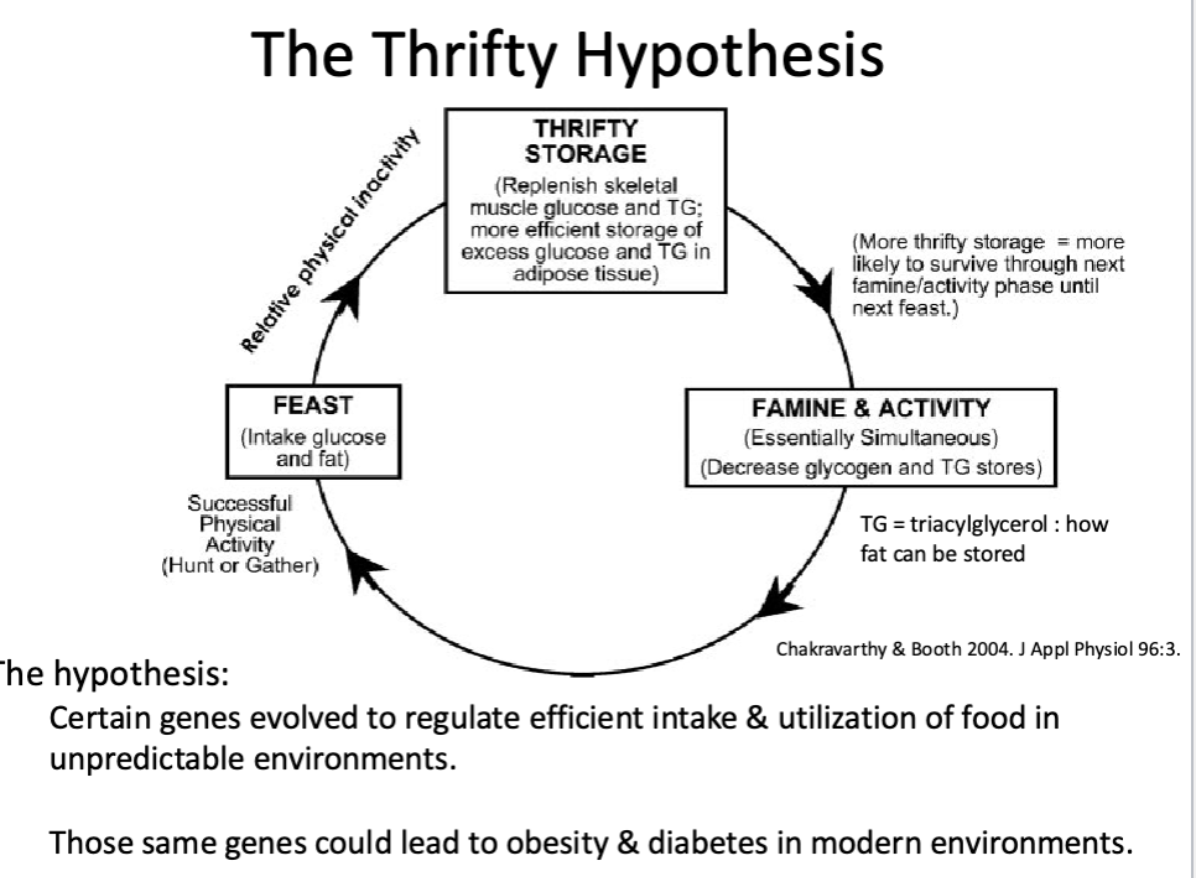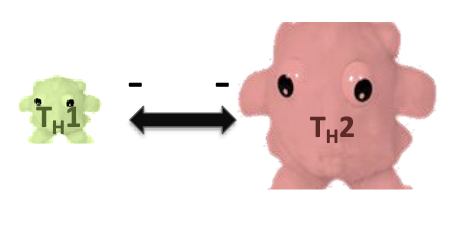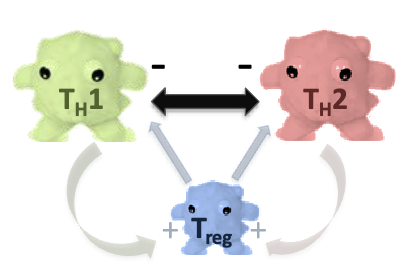Lecture 4 Mismatch Modernity
1/22
There's no tags or description
Looks like no tags are added yet.
Name | Mastery | Learn | Test | Matching | Spaced |
|---|
No study sessions yet.
23 Terms
what are the differences between our current environment and the environment of our species’ evolutionary history? how might this difference affect our current traits?
As a species, we have spent most of our time in an environment that was entirely different from the one most of us currently experience
Many of our current traits and behaviors will have been shaped by those past environments
Some advantageous traits from the past environment may no longer be beneficial in the current environment
Food availability, composition → obesity and related health problems
Pathogens and parasites to which we are commonly exposed to → allergies, asthma
what is the difference between today’s modern diet and our ancestral diet?
ancestral diet consumed more protein and less fat; carbs came from vegetables and fruit and no refined flour was consumed
modern diet consumes more fat and less protein; carbs come mainly from sugars and refined flours, less from fruits and vegetables
cause of obesity
high calorie input relative to calorie expenditure
thrifty hypothesis
Certain genes evolved to regulate the efficient intake and utilization of food in unpredictable environments → those same genes could lead to obesity and diabetes in modern environments

thrifty genotype
current prevalence of obesity and diabetes is the result of positive selection for their underlying genes in a past environment
what are the debate arguments surrounding the thrifty genotype?
we should all be obese (or none of us)
If we entered period of agrarianism → every single should human should look obese
evidence suggests famines may not have been important before humans lived in sedentary agricultural societies → selection has only been acting for about 400 to 600 generations
famines don’t actually increase mortality enough to act as a particularly strong selective pressure
Early agricultural revolution → probably didn’t experience famine that much because you were moving around
the mortality percentage required to have the obesity-causing allele reach 30% in 600 generations is 15-20% → however, mortality during famine rarely exceeds 10%
what did past environments favor? obese or slim?
selection favored slimness because past environments could have had predators that ate the obese people
what is favored in modern environments? obese or slim?
medicine can treat obesity → so there isn’t a strong selective pressure → you can drift into obesity because there is no selective pressure against it
drifty genotype
current prevalence of obesity and diabetes is the result of genetic drift (and relaxation of selection) in current environments rather than selection for their underlying genes in past environments
what is an advantage of the thrifty genotype?
advantage of thrifty genotype may be result of differential fertility rather than differential survival
predictions of thrifty genotype hypothesis
genes underlying susceptibility to Type 2 diabetes should be ‘old’
these genes should be more prevalent among Nauruans, Pima Indians, and other high risk groups
predictions of the drifty genotype hypothesis
no single gene (or set of a few genes) will be found that underlies susceptibility to obesity and type 2 diabetes
hygiene hypothesis
says that over most of human and animal history, we’ve had to coexist with a diverse set of microbes and pollens (we had to deal with the environment) → but as we moved into cities and medicine evolved, humans started to be separated from the natural world
Over time, as you grow, you weren’t exposed to much stuff in your childhood → immune hyperactive as adult
TH1 cells
involved mainly with killing intracellular micro-parasites (e.g. bacteria)
TH2 cells
involved mainly with killing macro-parasites (e.g. worms); related to allergy response
TH1 and TH2 ______ each other
TH1 and TH2 inhibit each other
Regulatory T-Cells ______ other T-cell responses
Regulatory T-Cells inhibit other T-cell responses
TH1/TH2 Rebalancing (one of the two formulations of the hygiene hypothesis)
Lack of exposure to microbes means immune response remains TH2 skewed, and susceptible to allergies, asthma
Shutting down the ability of TH1, promoting TH2
hyperallergic
Problem is lack of exposure to microbes (bacteria, viruses) → because we are exposes less to microbes, TH1 response goes down and TH2 goes up

‘Old Friends’ hypothesis (one of two formulations of the hygiene hypothesis)
The immune system evolved in the presence of a number of parasitic organisms, which are encountered less frequently in current environments
TH1 and TH2 reponses are amplified
Problem is lack of exposure to particular microbes and macrobes (worms) that humans used to encounter frequently

what is the mismatch hypothesis regarding allergies, asthma, and autoimmunity?
mismatch with modern environments (changes in fitness landscape)
lack of exposure to common parasites of the past
what is the coevolution hypothesis regarding allergies, asthma, and autoimmunity?
pathogens coevolving with their hosts
immune systems evolved in the presence of those parasites
what is the tradeoff hypothesis regarding allergies, asthma, and autoimmunity?
deaths from infectious diseases are much more rare in modern environments, but we suffer far more from allergies and autoimmune disorders
hygiene hypothesis summary (regarding allergies, asthma, and autoimmunity)
in modern environments, we’re rarely exposed to common parasites of the past
human immune systems evolved in the presence of those parasites and are (in some sense) optimized for operating under ‘infected’ or exposed conditions
consequences:
deaths from infectious diseases more rare in modern environments → cost is we suffer more from allergies and autoimmune disorders